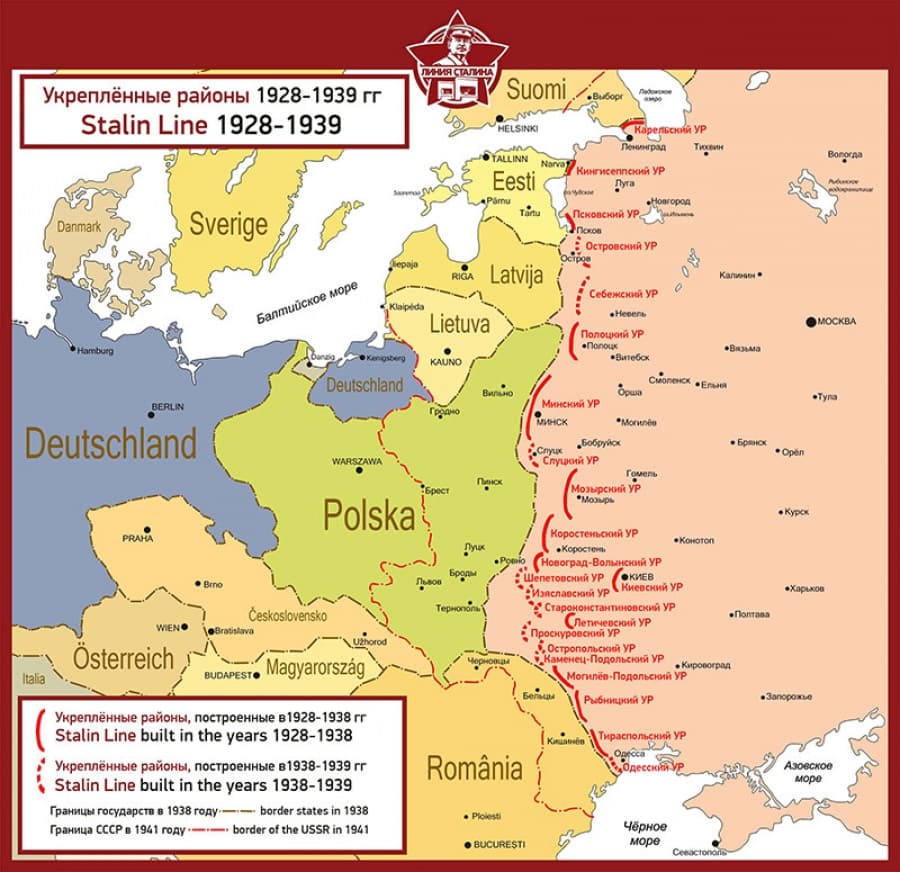Basically you hand the Wehrmacht another month of time to assault Moscow.
That's rubbish. To start with, the Germans weren't even delayed a month by the historical defense along the 1941 border. Beyond that issue, deploying along the Stalin-line would greatly improve Soviet fighting capability because...
The problems with the Red Army in 1941 were endemic, not strictly resultant from the surprise (cough "surprise" cough) attack. Poor communication, lack of flexibility, incompetent officer corps, greatly reduced numbers of NCO's, and piss poor logistics were all crippling.
It mostly solves the bolded issue. The Soviet logistical issues were largely caused by deploying to the new frontier despite most of the supply centers being along the old one, on the other side of some truly awful rail and road networks. This left them too far from their own logistic bases to be properly supported. This left them low on fuel and ammunition when the war began, with much of their equipment poorly maintained or inoperable. This was a significant factor in the Whermacht's easy destruction of so many Soviet armies. Forming the main defenses further east would considerably ease the strain on the rear services and consequently would greatly increase the combat power of the supported formations, allowing a much larger number of them to fight much more effectively even with their other flaws.
On the flip side, the Germans would be seriously hindered. As I noted above, the Soviet defense along the frontier, save in the south, neither seriously held up nor damaged the German advance. The hastily raised reserve formations east of the D'niepr, which were even worse in terms of equipment, communication, officers, etc then those that had previously been annihilated,
did manage to seriously hold up the Germans for months and do a lot of damage to them. The reason for this is (1) those new Soviet formations were fighting on territory that they could be logistically supported and (2) the Wehrmacht had moved, drastically and now the same awful road and rail nets that had hampered Soviet logistics were crippling the Germans, greatly reducing German combat power.
In sum, drawing the Soviets MLR as the Stalin line will see a greatly improved outcome for the Soviets. While a defensive line further east would allow the Germans a slightly easier time crossing the border, the shoddy roads and rails would still inevitably weaken them and when they ran into the Soviet main defensive line, that line would be both stronger (due to having much better logistical support due to not having to deal with the same hundreds of km of shitty roads now hampering the Germans) and able to effectively apply greater numbers against the invaders.
The fundamental problem, of course, is how you convince the Soviets to accept this both politically and militarily (it rather runs against what their 1941 doctrine called for).
Remember as late as 1943, the Germans could still dismantle entire soviet field armies.
No they couldn't? Even 3rd Kharkov saw the Soviet armies involved merely mauled and routed, not outright annihilated as happened in 1941 and '42, and the rest of 1943 tended to see Soviet armies emerge intact and holding their ground on the other end even in fights they lost.
That is a LOT of territory to give up, being undefended.
With hindsight, sacrificing a lot of land of miniscule value to greatly strengthen ones own forces while weakening the enemies is a good idea. The problem is that in this case is that term "with hindsight". The OP needs to figure out
how the Soviets come to the realization that they should defend along the Stalin line.
not to mention the stalin line was all but utterly abandoned and easily flanked
Reread the post you quoted: the OP is positing that is not the case.

